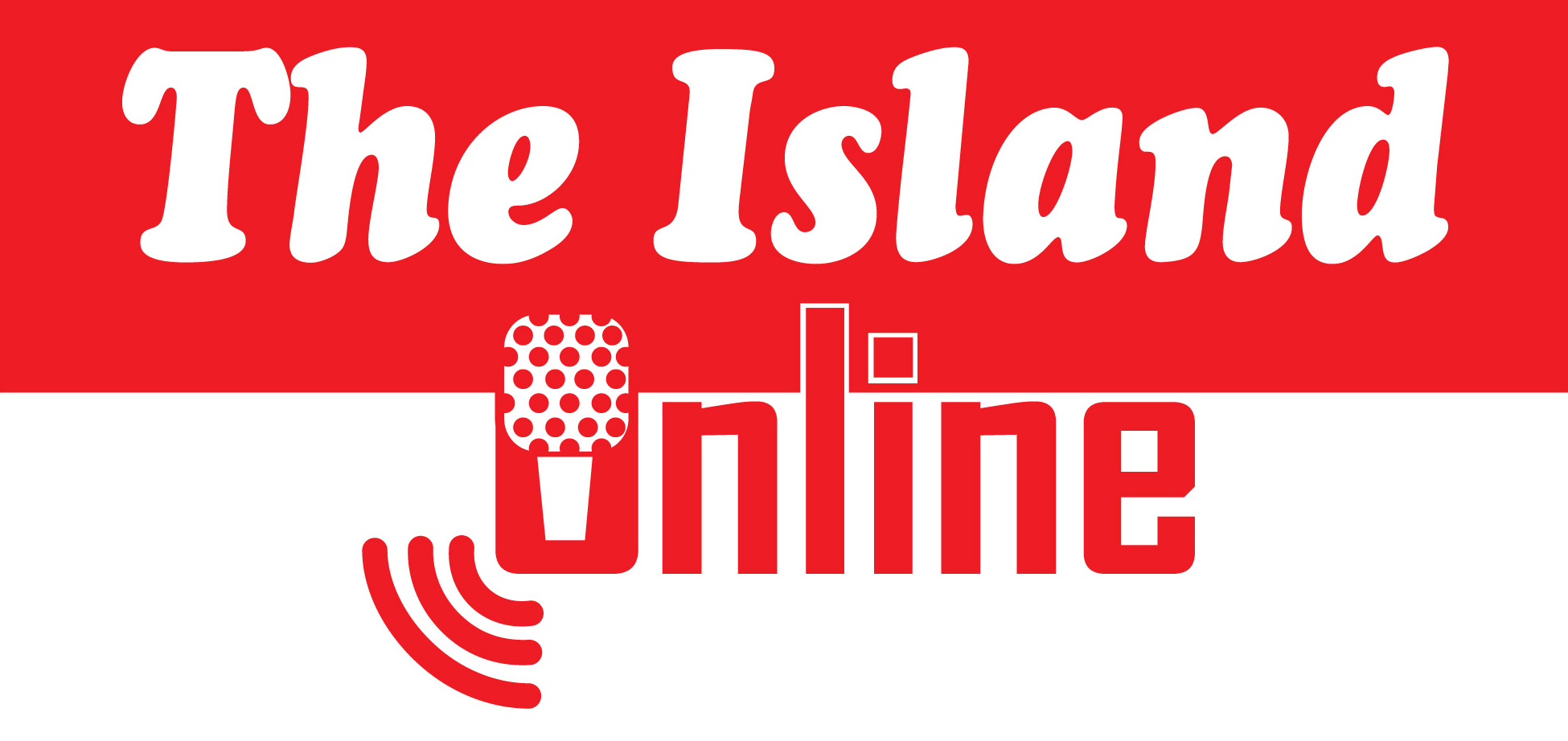Midweek Review
Current Crisis of Performing Arts Education in Sri Lankan Universities
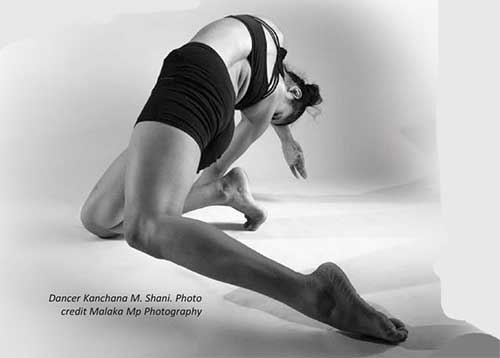
E-learning and technocracy:
By Dr Saumya Liyanage
Introduction
During the first wave of corona outbreak, a group of academics gathered via Zoom online forum, at the invitation of Sripalee campus online radio, to discuss the challenges and opportunities in using online educational tools. Nearly 20 academics representing various universities in the country and other educational institutions took part in the discussion, which lasted for more than three hours. Its focus was mainly on how e-learning could be a solution to the challenge of social isolation and how to use zoom and other online tools to educate undergraduates.
From early months of 2020 till today, universities, schools, and other educational institutions have been affected by sudden closures and openings. As for university education, it is observed that gradual continuation of teaching, learning and assessments are continually disrupted. With the first wave of the COVID-19, university authorities introduced online teaching and learning activities to undergraduates, and online lectures were conducted accordingly. However, the situation today is becoming more intense. Subjects such as performing arts have been facing a myriad of difficulties in delivering lectures to students who are not physically present in universities. The advent of technology and online learning has given rise to some myths governing and overpowering the existing educational approaches and methods. This paper intends to discuss these myths.
Virtual Reality
For the last ten-fifteen years, the World Bank and the Ministry of Higher Education have spent millions of rupees on effecting changes to undergraduate education in the country. Therefore, it is not the COVID-19 that led to the germination of the idea of online and blended learning in universities. These technologies, especially LMS [Learning Management System], had been introduced to universities before COVID-19 and academics had various concerns and doubts about using them. LMS and other online projects had been in abeyance for years in the university sector while majority of learning and teaching took place with the help of onsite, teacher-centered education model.
The ideas of using online tools especially zoom conferencing and LMS, Google Classroom or Microsoft Team seem to be very fashionable to some of the academics who are hypnotically attached to World Wide Web and other such technologies. Some people are even fascinated by how students are using WhatsApp to share their lecture notes. My question is what is so new about using WhatsApp and sharing lecture notes if they repeat the same traditional teacher centered learning system with the help of a new technology. Of what use is new technology if students remain dependent on teacher centric learning method?
But there are ample resources and research already being conducted on how teaching performing arts could be carried out amidst a pandemic crisis and the pedagogical and philosophical challenges it faces (Asunka, 2008; Corbera et al., 2020; Demuyakor, 2020; González-Zamar and Abad-Segura, 2020; Rapanta et al., 2020; Sasere and Makhasane, 2020). But have we thought about establishing effective means of delivering performing arts education via e-learning modes in this country? Who does the research on how students get access to online facilities, and how they get access to available infrastructure? What are the methodological, philosophical, and practical issues that academics experience when teaching subjects such as performing arts? What solutions or remedies could be proposed to resolve these issues? What lessons we could learn from their counterparts facing such challenges? Universities, ministries, authorities remain mum.
Online and Onsite
As an effective teaching method, a learning mode like LMS could be a useful tool in engaging with students. However, it should be noted that no one can assure that these tools are the only way to deliver diverse undergraduate programmes that are being offered in the Sri Lankan universities. For instance, University of the Visual and Performing Arts offers degrees related to music, dance, drama, film studies, and visual arts. There are ways in which these online tools could be effectively used to deliver subject contents. But that does not justify the fact that these online tools are the sole means of delivering all courses and modules. There are significant limitations and incapability when it comes to teaching visual and performing art via online modes.
There is an epistemological question pertaining to knowledge generation as regards performing arts if the teacher-disciple engagement is disrupted in the classroom/studio/performance laboratory setting. As researchers argue that ‘[…] other forms of research are led by probably theory, plausible theory, and possible theory, a/r/tography is led by theorizing potential as it moves beyond the boundaries (O’Sullivan, 2001) of theory. A living practice is not about discovering knowledge but rather about “the feel of new forms of vitality” (Triggs et el., 2014, p. 256). Artists embrace the living of practice and becoming part of the variations within potential’s variations’ (Leavy, 2019, p. 37). Thus, arts education is not merely delivering theories to students but it contains arts making, learning, and knowing as interconnected ‘within the moment of art and pedagogical practices’ (ibid, p. 37).
Topics related to the value of liberal arts and humanities have been widely discussed in Sri Lankan academia (kathika, 2012, kathika, 2019). Arts based education/research generates key important skills and somatic knowledge that their impact upon a continual growth of a society is paramount. With a limited access created by online learning, those broader learning objectives, and graduate learning outcomes cannot be fulfilled. For instance, Arts-based education/research and particularly learning performing arts encourage diverse skills and knowledge spectrum within its corporeal engagement of learning.
In a studio/theatre/dance laboratory setting, teachers and students experience various haptic and other corporeal knowing. For instance, they discover new insights, explore novel learning methods, resolve problems, forge micro-macro connections, expose to holistic approaches, raise awareness and critical thinking, develop corporeal sensitivities, cultivate bodily receptive, raise ethical and moral awareness, challenge dominant ideologies, propose alternative perspectives, entertain multiple meanings, confront with prejudices, bring marginalized bodies to the forefront, increase emotional intelligence (Leavy 2019, pp. 8-11). I am literally speechless when I think of how to achieve these learning outcomes via e-learning. The fundamental point in arts based learning/research is that it is centralised with the human body. Artistic practice, creative outcomes, and empathic skills purely depend on the corporeality and action because, learning takes place when bodies move in space. Humans as Maxine Sheets-Johnston argues are animated beings and their motility is the key to learn (Sheets-Johnstone, 2009, 2011, 2013). But the question might be how then the e-learning would facilitate such corporeal and tangible environment virtually where students are fragmented and scattered in every corner of the country?
As seen above, if we need to teach performing arts online, we need to prepare subject contents designed to deliver online teaching. This work takes a lot of labor, infrastructure, and intellectual energy. It also consumes a considerable amount of time for academics to prepare their teaching materials and contents to be using online platforms. The question is whether university academics are ready, or being trained to do so. In some faculties, some academics still do not use emails to communicate with their peers. Therefore, with these constrains and limitations, I have a doubt whether sophisticated online learning platforms can be implemented overnight to deliver subject contents for students.
Escapism and Homogeneity
The establishment of e-learning mechanism in the universities popularises the idea that the teacher can avoid unnecessary engagements with student groups. The interaction between the lecturer and the group of students is on the wane due to many technological deficits experienced during the lecture. When the lecture is delivered, all the listeners should mute their mics and cameras. The result is the gradual declining of engagement between students and academics. This kind of arrangement helps teachers finish their assigned jobs without having to field questions.
The need for e-learning and its vital engagement in higher education were geared by the UGC and this suggestion resulted from the assumption that the university community, especially student body, is ‘still healthy and not affected by the pandemic’. There is a widely accepted assumption that student bodies are understood as a homogeneous entity where individual capabilities, health, and their social, cultural, and economic capacities are intentionally ignored. With the current COVID-19 situation, universities have ignored students who have poor economic backgrounds and cannot afford internet and Wi-Fi facilities to connect with university online teaching. What the authorities want is to show that universities are functioning well despite pandemic-related restrictions.
Technocracy and Domination
Another myth is that e-learning is an effective solution to the problem of disruptions to education. In the university sector, many course contents from medicine to performing arts have had to be delivered through online means. This virtual reality creates a false conception and ideological emphasis that without this kind of technological advancement, education will be doomed.
However, the university system seems to have ignored that the classical ways of teaching and learning are already being shattered and altered with the advent of new technology. Some of the disciplines in social sciences and humanities and also in performing arts and research are continually being threatened and marginalised by virtual learning approaches. The vital connection between students and teachers and the embodied relationship between them in shared learning environments are also being ignored. Finally, what the academic community is apparently unaware of in this technological advancement is that they are being subjugated to a social system and the technocracy that are beginning to govern the education system of this country. Disciplines that cannot adapt to e-learning methodologies are bound to be extinct sooner or later.
Conclusion
University education has been affected by the current corona outbreak. Previous traditional classroom learning activities and interactive sessions have given way to online teaching and learning. However, within Sri Lankan university, delivering subject contents to students’ bodies and engaging with them effectively remain an unresolved question. Among other disciplines, performing arts and some related disciplines have been affected by online teaching and academics and students both have experienced complex difficulties in delivering practical components and training via virtual modes.
However, it is alarming that with the intervention of online teaching and using distance learning apparatuses, technocracy has come to stay in the university system. This technocratic order emphasizes the need for the transformation and establishes online regulations ignoring some of subject specific requirements and natures of embodied learning. Fine arts and performing arts education is particularly at stake due to the new normal, and it is uncertain that how the universities or academic community would face these challenges in the future.
Reference list
Asunka, S. (2008). Online Learning in Higher Education in Sub-Saharan Africa: Ghanaian University students’ experiences and perceptions. The International Review of Research in Open and Distributed Learning, 9(3).
Corbera, E., Anguelovski, I., Honey-Rosés, J. and Ruiz-Mallén, I. (2020). Academia in the Time of COVID-19: Towards an Ethics of Care. Planning Theory & Practice, 21(2), pp.191–199.
Demuyakor, J. (2020). Coronavirus (COVID-19) and Online Learning in Higher Institutions of Education: A Survey of the Perceptions of Ghanaian International Students in China. Online Journal of Communication and Media Technologies, 10(3), p.e202018.
González-Zamar, M.-D. and Abad-Segura, E. (2020). Implications of Virtual Reality in Arts Education: Research Analysis in the Context of Higher Education. Education Sciences, 10(9), p.225.
kathika (2012). The Role of Education in Taking Care of the World : The Value of the Liberal Arts and Humanities. [online] “කතිකා” සංවාද මණ්ඩපය. Available at: https://kathika.lk/2012/08/11/the-role-of-education-in-taking-care-of-the-world-the-value-of-the-liberal-arts-and-humanities/ [Accessed 11 Nov. 2020].
kathika (2019). Social Science and Humanities Education in the Universities in Sri Lanka and its Discontents: Some Reflections – Kumudu Kusum Kumara. [online] “කතිකා” සංවාද මණ්ඩපය. Available at: https://kathika.lk/2019/07/10/social-science-and-humanities-education-in-the-universities-in-sri-lanka-and-its-discontents-some-reflections/ [Accessed 11 Nov. 2020].
Leavy, P. (2019). Handbook of arts-based research. New York: The Guilford Press.
O’Neill, M.E. (2001). Corporeal Experience: A Haptic Way of Knowing. Journal of Architectural Education, 55(1), pp.3–12.
Rapanta, C., Botturi, L., Goodyear, P., Guàrdia, L. and Koole, M. (2020). Online University Teaching During and After the Covid-19 Crisis: Refocusing Teacher Presence and Learning Activity. Postdigital Science and Education.
Sasere, O.B. and Makhasane, S.D. (2020). Global Perceptions of Faculties on Virtual Programme Delivery and Assessment in Higher Education Institutions During the 2020 COVID-19 Pandemic. International Journal of Higher Education, 9(5), p.181.
Sheets-Johnstone, M. (2009). Body and Movement: Basic Dynamic Principles. Handbook of Phenomenology and Cognitive Science, pp.217–234.
Sheets-Johnstone, M. (2011). From movement to dance. Phenomenology and the Cognitive Sciences, 11(1), pp.39–57.
Sheets-Johnstone, M. (2013). Movement as a Way of Knowing. Scholarpedia, 8(6), p.30375.
- News Advertiesment
See Kapruka’s top selling online shopping categories such as Toys, Grocery, Flowers, Birthday Cakes, Fruits, Chocolates, Clothing and Electronics. Also see Kapruka’s unique online services such as Money Remittence,News, Courier/Delivery, Food Delivery and over 700 top brands. Also get products from Amazon & Ebay via Kapruka Gloabal Shop into Sri Lanka.
Midweek Review
‘Professor of English Language Teaching’
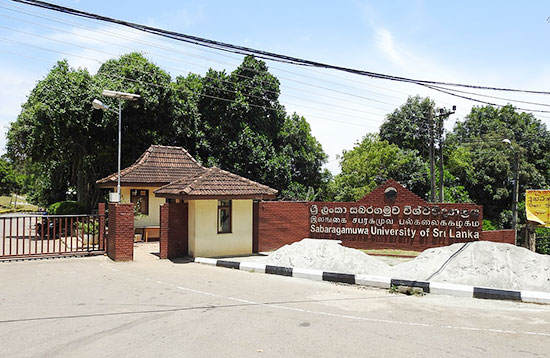
It is a pleasure to be here today, when the University resumes postgraduate work in English and Education which we first embarked on over 20 years ago. The presence of a Professor on English Language Teaching from Kelaniya makes clear that the concept has now been mainstreamed, which is a cause for great satisfaction.
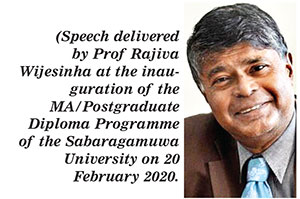 Twenty years ago, this was not the case. Our initiative was looked at askance, as indeed was the initiative which Prof. Arjuna Aluwihare engaged in as UGC Chairman to make degrees in English more widely available. Those were the days in which the three established Departments of English in the University system, at Peradeniya and Kelaniya and Colombo, were unbelievably conservative. Their contempt for his efforts made him turn to Sri Jayewardenepura, which did not even have a Department of English then and only offered it as one amongst three subjects for a General Degree.
Twenty years ago, this was not the case. Our initiative was looked at askance, as indeed was the initiative which Prof. Arjuna Aluwihare engaged in as UGC Chairman to make degrees in English more widely available. Those were the days in which the three established Departments of English in the University system, at Peradeniya and Kelaniya and Colombo, were unbelievably conservative. Their contempt for his efforts made him turn to Sri Jayewardenepura, which did not even have a Department of English then and only offered it as one amongst three subjects for a General Degree.
Ironically, the most dogmatic defence of this exclusivity came from Colombo, where the pioneer in English teaching had been Prof. Chitra Wickramasuriya, whose expertise was, in fact, in English teaching. But her successor, when I tried to suggest reforms, told me proudly that their graduates could go on to do postgraduate degrees at Cambridge. I suppose that, for generations brought up on idolization of E. F. C. Ludowyke, that was the acme of intellectual achievement.
I should note that the sort of idealization of Ludowyke, the then academic establishment engaged in was unfair to a very broadminded man. It was the Kelaniya establishment that claimed that he ‘maintained high standards, but was rarefied and Eurocentric and had an inhibiting effect on creative writing’. This was quite preposterous coming from someone who removed all Sri Lankan and other post-colonial writing from an Advanced Level English syllabus. That syllabus, I should mention, began with Jacobean poetry about the cherry-cheeked charms of Englishwomen. And such a characterization of Ludowyke totally ignored his roots in Sri Lanka, his work in drama which helped Sarachchandra so much, and his writing including ‘Those Long Afternoons’, which I am delighted that a former Sabaragamuwa student, C K Jayanetti, hopes to resurrect.
I have gone at some length into the situation in the nineties because I notice that your syllabus includes in the very first semester study of ‘Paradigms in Sri Lankan English Education’. This is an excellent idea, something which we did not have in our long-ago syllabus. But that was perhaps understandable since there was little to study then except a history of increasing exclusivity, and a betrayal of the excuse for getting the additional funding those English Departments received. They claimed to be developing teachers of English for the nation; complete nonsense, since those who were knowledgeable about cherries ripening in a face were not likely to move to rural areas in Sri Lanka to teach English. It was left to the products of Aluwihare’s initiative to undertake that task.
Another absurdity of that period, which seems so far away now, was resistance to training for teaching within the university system. When I restarted English medium education in the state system in Sri Lanka, in 2001, and realized what an uphill struggle it was to find competent teachers, I wrote to all the universities asking that they introduce modules in teacher training. I met condign refusal from all except, I should note with continuing gratitude, from the University of Sri Jayewardenepura, where Paru Nagasunderam introduced it for the external degree. When I started that degree, I had taken a leaf out of Kelaniya’s book and, in addition to English Literature and English Language, taught as two separate subjects given the language development needs of students, made the third subject Classics. But in time I realized that was not at all useful. Thankfully, that left a hole which ELT filled admirably at the turn of the century.
The title of your keynote speaker today, Professor of English Language Teaching, is clear evidence of how far we have come from those distant days, and how thankful we should be that a new generation of practical academics such as her and Dinali Fernando at Kelaniya, Chitra Jayatilleke and Madhubhashini Ratnayake at USJP and the lively lot at the Postgraduate Institute of English at the Open University are now making the running. I hope Sabaragamuwa under its current team will once again take its former place at the forefront of innovation.
To get back to your curriculum, I have been asked to teach for the paper on Advanced Reading and Writing in English. I worried about this at first since it is a very long time since I have taught, and I feel the old energy and enthusiasm are rapidly fading. But having seen the care with which the syllabus has been designed, I thought I should try to revive my flagging capabilities.
However, I have suggested that the university prescribe a textbook for this course since I think it is essential, if the rounded reading prescribed is to be done, that students should have ready access to a range of material. One of the reasons I began while at the British Council an intensive programme of publications was that students did not read round their texts. If a novel was prescribed, they read that novel and nothing more. If particular poems were prescribed, they read those poems and nothing more. This was especially damaging in the latter case since the more one read of any poet the more one understood what he was expressing.
Though given the short notice I could not prepare anything, I remembered a series of school textbooks I had been asked to prepare about 15 years ago by International Book House for what were termed international schools offering the local syllabus in the English medium. Obviously, the appalling textbooks produced by the Ministry of Education in those days for the rather primitive English syllabus were unsuitable for students with more advanced English. So, I put together more sophisticated readers which proved popular. I was heartened too by a very positive review of these by Dinali Fernando, now at Kelaniya, whose approach to students has always been both sympathetic and practical.
I hope then that, in addition to the texts from the book that I will discuss, students will read other texts in the book. In addition to poetry and fiction the book has texts on politics and history and law and international relations, about which one would hope postgraduate students would want some basic understanding.
Similarly, I do hope whoever teaches about Paradigms in English Education will prescribe a textbook so that students will understand more about what has been going on. Unfortunately, there has been little published about this but at least some students will I think benefit from my book on English and Education: In Search of Equity and Excellence? which Godage & Bros brought out in 2016. And then there was Lakmahal Justified: Taking English to the People, which came out in 2018, though that covers other topics too and only particular chapters will be relevant.
The former book is bulky but I believe it is entertaining as well. So, to conclude I will quote from it, to show what should not be done in Education and English. For instance, it is heartening that you are concerned with ‘social integration, co-existence and intercultural harmony’ and that you want to encourage ‘sensitivity towards different cultural and linguistic identities’. But for heaven’s sake do not do it as the NIE did several years ago in exaggerating differences. In those dark days, they produced textbooks which declared that ‘Muslims are better known as heavy eaters and have introduced many tasty dishes to the country. Watalappam and Buriani are some of these dishes. A distinguished feature of the Muslims is that they sit on the floor and eat food from a single plate to show their brotherhood. They eat string hoppers and hoppers for breakfast. They have rice and curry for lunch and dinner.’ The Sinhalese have ‘three hearty meals a day’ and ‘The ladies wear the saree with a difference and it is called the Kandyan saree’. Conversely, the Tamils ‘who live mainly in the northern and eastern provinces … speak the Tamil language with a heavy accent’ and ‘are a close-knit group with a heavy cultural background’’.
And for heaven’s sake do not train teachers by telling them that ‘Still the traditional ‘Transmission’ and the ‘Transaction’ roles are prevalent in the classroom. Due to the adverse standard of the school leavers, it has become necessary to develop the learning-teaching process. In the ‘Transmission’ role, the student is considered as someone who does not know anything and the teacher transmits knowledge to him or her. This inhibits the development of the student.
In the ‘Transaction’ role, the dialogue that the teacher starts with the students is the initial stage of this (whatever this might be). Thereafter, from the teacher to the class and from the class to the teacher, ideas flow and interaction between student-student too starts afterwards and turns into a dialogue. From known to unknown, simple to complex are initiated and for this to happen, the teacher starts questioning.’
And while avoiding such tedious jargon, please make sure their command of the language is better than to produce sentences such as these, or what was seen in an English text, again thankfully several years ago:
Read the story …
Hello! We are going to the zoo. “Do you like to join us” asked Sylvia. “Sorry, I can’t I’m going to the library now. Anyway, have a nice time” bye.
So Syliva went to the zoo with her parents. At the entrance her father bought tickets. First, they went to see the monkeys
She looked at a monkey. It made a funny face and started swinging Sylvia shouted: “He is swinging look now it is hanging from its tail its marvellous”
“Monkey usually do that’
I do hope your students will not hang from their tails as these monkeys do.
Midweek Review
Little known composers of classical super-hits
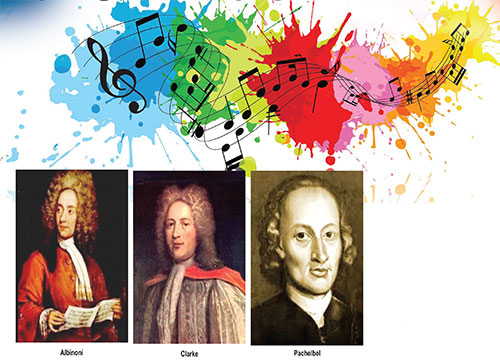
By Satyajith Andradi
Quite understandably, the world of classical music is dominated by the brand images of great composers. It is their compositions that we very often hear. Further, it is their life histories that we get to know. In fact, loads of information associated with great names starting with Beethoven, Bach and Mozart has become second nature to classical music aficionados. The classical music industry, comprising impresarios, music publishers, record companies, broadcasters, critics, and scholars, not to mention composers and performers, is largely responsible for this. However, it so happens that classical music lovers are from time to time pleasantly struck by the irresistible charm and beauty of classical pieces, the origins of which are little known, if not through and through obscure. Intriguingly, most of these musical gems happen to be classical super – hits. This article attempts to present some of these famous pieces and their little-known composers.
Pachelbel’s Canon in D
The highly popular piece known as Pachelbel’s Canon in D constitutes the first part of Johann Pachelbel’s ‘Canon and Gigue in D major for three violins and basso continuo’. The second part of the work, namely the gigue, is rarely performed. Pachelbel was a German organist and composer. He was born in Nuremburg in 1653, and was held in high esteem during his life time. He held many important musical posts including that of organist of the famed St Stephen’s Cathedral in Vienna. He was the teacher of Bach’s elder brother Johann Christoph. Bach held Pachelbel in high regard, and used his compositions as models during his formative years as a composer. Pachelbel died in Nuremburg in 1706.
Pachelbel’s Canon in D is an intricate piece of contrapuntal music. The melodic phrases played by one voice are strictly imitated by the other voices. Whilst the basso continuo constitutes a basso ostinato, the other three voices subject the original tune to tasteful variation. Although the canon was written for three violins and continuo, its immense popularity has resulted in the adoption of the piece to numerous other combinations of instruments. The music is intensely soothing and uplifting. Understandingly, it is widely played at joyous functions such as weddings.
Jeremiah Clarke’s Trumpet Voluntary
The hugely popular piece known as ‘Jeremiah Clarke’s Trumpet Voluntary’ appeared originally as ‘ The Prince of Denmark’s March’ in Jeremiah Clarke’s book ‘ Choice lessons for the Harpsichord and Spinet’, which was published in 1700 ( Michael Kennedy; Oxford Dictionary of Music ). Sometimes, it has also been erroneously attributed to England’s greatest composer Henry Purcell (1659 – 1695 ) and called ‘Purcell’s Trumpet Voluntary (Percy A. Scholes ; Oxford Companion to Music). This brilliant composition is often played at joyous occasions such as weddings and graduation ceremonies. Needless to say, it is a piece of processional music, par excellence. As its name suggests, it is probably best suited for solo trumpet and organ. However, it is often played for different combinations of instruments, with or without solo trumpet. It was composed by the English composer and organist Jeremiah Clarke.
Jeremiah Clarke was born in London in 1670. He was, like his elder contemporary Pachelbel, a musician of great repute during his time, and held important musical posts. He was the organist of London’s St. Paul’s Cathedral and the composer of the Theatre Royal. He died in London in 1707 due to self – inflicted gun – shot injuries, supposedly resulting from a failed love affair.
Albinoni’s Adagio
The full title of the hugely famous piece known as ‘Albinoni’s Adagio’ is ‘Adagio for organ and strings in G minor’. However, due to its enormous popularity, the piece has been arranged for numerous combinations of instruments. It is also rendered as an organ solo. The composition, which epitomizes pathos, is structured as a chaconne with a brooding bass, which reminds of the inevitability and ever presence of death. Nonetheless, there is no trace of despondency in this ethereal music. On the contrary, its intense euphony transcends the feeling of death and calms the soul. The composition has been attributed to the Italian composer Tomaso Albinoni (1671 – 1750), who was a contemporary of Bach and Handel. However, the authorship of the work is shrouded in mystery. Michael Kennedy notes: “The popular Adagio for organ and strings in G minor owes very little to Albinoni, having been constructed from a MS fragment by the twentieth century Italian musicologist Remo Giazotto, whose copyright it is” (Michael Kennedy; Oxford Dictionary of Music).
Boccherini’s Minuet
The classical super-hit known as ‘Boccherini’s Minuet’ is quite different from ‘Albinoni’s Adagio’. It is a short piece of absolutely delightful music. It was composed by the Italian cellist and composer Luigi Boccherini. It belongs to his string quintet in E major, Op. 13, No. 5. However, due to its immense popularity, the minuet is performed on different combinations of instruments.
Boccherini was born in Lucca in 1743. He was a contemporary of Haydn and Mozart, and an elder contemporary of Beethoven. He was a prolific composer. His music shows considerable affinity to that of Haydn. He lived in Madrid for a considerable part of his life, and was attached to the royal court of Spain as a chamber composer. Boccherini died in poverty in Madrid in 1805.
Like numerous other souls, I have found immense joy by listening to popular classical pieces like Pachelbel’s Canon in D, Jeremiah Clarke’s Trumpet Voluntary, Albinoni’s Adagio and Boccherini’s Minuet. They have often helped me to unwind and get over the stresses of daily life. Intriguingly, such music has also made me wonder how our world would have been if the likes of Bach, Handel, Haydn, Mozart, Beethoven, and Schubert had never lived. Surely, the world would have been immeasurably poorer without them. However, in all probability, we would have still had Pachelbel’s Canon in D, Jeremiah Clarke’s Trumpet Voluntary, Albinoni’s Adagio, and Boccherini’s Minuet, to cheer us up and uplift our spirits.
Midweek Review
The Tax Payer and the Tough
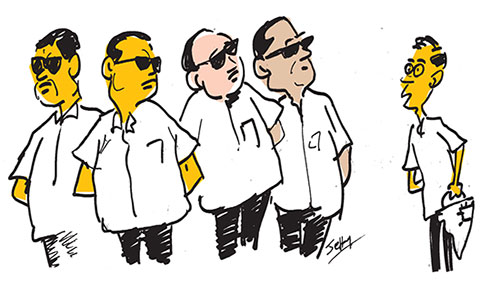
By Lynn Ockersz
The tax owed by him to Caesar,
Leaves our retiree aghast…
How is he to foot this bill,
With the few rupees,
He has scraped together over the months,
In a shrinking savings account,
While the fires in his crumbling hearth,
Come to a sputtering halt?
But in the suave villa next door,
Stands a hulk in shiny black and white,
Over a Member of the August House,
Keeping an eagle eye,
Lest the Rep of great renown,
Be besieged by petitioners,
Crying out for respite,
From worries in a hand-to-mouth life,
But this thought our retiree horrifies:
Aren’t his hard-earned rupees,
Merely fattening Caesar and his cohorts?

